It’s probably safe to say that most of the world has heard of the infamous "toxic black mold." Unfortunately, while this singular topic is all the rage in the media, there’s still a lack of awareness given to this fungus among us. That has led to a long list of misconceptions not only about black mold but also about mold in general. For example, the common idea that all black mold is the exact same variety? Not true!
Understanding what mold is, the impact it can have on an indoor environment, and how to properly handle it is crucial for our ongoing wellness. When the average person breathes 20,000 breaths per day and spends around 90% of the day indoors, what’s in these spaces matters. Yet far too often, individuals are suffering due to exposure to toxic environments.
Having a better awareness of the infamous "toxic black mold" is a piece of this healthier home puzzle. That being said, here’s your ultimate guide to this variety of fungi.
What is Black Mold?
So far, over 100,000 species of mold have been identified by researchers, and they come in a variety of shapes and colors. Many of these species can be black in color, such as Aspergillus and Chaetomium, highlighting one main issue with the popular "black mold" topic. We don’t know what species a colony could be until proper testing is completed.
That being said, when discussing black mold, oftentimes people are referring specifically to a species called Stachybotrys chartarum.

First discovered in Prague, this species of mold rose to fame in the 1990s after almost a dozen infants in Cleveland, Ohio developed lung issues.¹’² The CDC later linked these cases to toxic "black mold" in water-damaged homes.
From that point on, while the CDC retracted its statement to say that further research was needed, the hype about this deadly mold species took the world by storm, and individuals started questioning what black mold symptoms were and just how drastically exposure could impact health for those who are sensitive to mold.³
What Causes Black Mold?
Mold requires two main elements to survive and thrive: food and water sources.⁴ While other species of mold can begin growing in 24–48 hours if these elements are present, black mold requires these conditions for a week or more before it will begin growing.
When it comes to food sources, organic matter is at the top of the list for edible options. Black mold, in particular, thrives best on surfaces with high cellulose content, such as fiberboard, paper, and drywall.
As for moisture, "black mold," or Stachybotrys chartarum specifically, is water-loving and requires high levels in order to survive and thrive.⁵’⁶ This means that the colonies require an active water source, such as a leak, or incredibly high indoor humidity, in order to grow within the home.
Is Black Mold Dangerous?
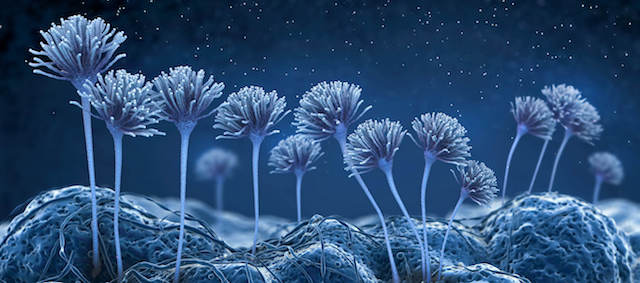
All species of mold reproduce by creating microscopic spores and releasing them into the surrounding area.⁷’⁸ Some species of mold, like Stachybotrys chartarum, also release microscopic toxins called mycotoxins when threatened.⁹ These tiny toxins are naturally toxic to our bodies, which is why the FDA regulates them in our food.¹⁰’¹¹’¹² To make matters even more complicated, some species of mold can release multiple types of mycotoxins. Stachybotrys chartarum, for example, can create trichothecenes roridan E, satratoxins F, G, and H, as well as verrucarin J mycotoxins.¹³
The key to mold’s ability to impact health is the size of the particles in question. Spores, mycotoxins, and fragments are small enough to be inhaled, absorbed, and ingested into the body. Once inside, they trigger an immune response, which is the underlying factor in their ability to cause adverse health reactions. As the particles continue to enter the body, the immune system will attempt to keep up removing them, but it can become overloaded or malfunction, particularly for those who are hypersensitive.¹⁴’¹⁵’¹⁶’¹⁷’¹⁸
This opens the door for chronic symptoms or related conditions such as Chronic Fatigue Syndrome.
What Are the Symptoms of Black Mold?
No two people respond to exposure the same way because of various factors. Some may develop the occasional runny nose, and others may develop over 30 chronic symptoms.
That being said, common black mold symptoms include:
Joint pain
Cold and flu-like symptoms
Brain fog
Skin pain
Chronic fatigue
Mood swings
Digestive problems
Headaches
Anxiety and/or depression
Hair loss
Thanks to mold’s ability to systemically affect the body, black mold symptoms (mold toxicity) can be wide-ranging.
Signs of Black Mold
Detecting if there’s black mold in the home is a multistep process that includes visual issues, odors, and chronic symptoms.
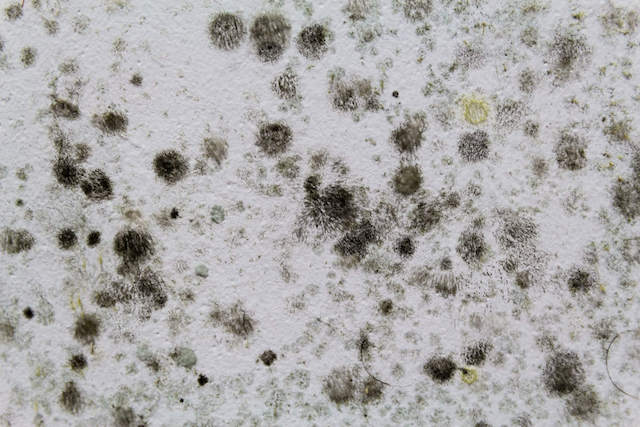
What Does Black Mold Look Like?
"Black mold” often appears dark in color (black, green, or brown). When it comes to the specific hue, melanin within its cells gives this species the dark color that led to its infamous name. It will also typically look fuzzy or slimy depending on the specific species.
Another aspect to look out for is water damage. As a water-loving mold, Stachybotrys chartarum requires high levels of moisture to grow in a home.¹⁹’²⁰ If there’s water damage present, this mold may be one of the species maximizing the opportunity.
Things to look out for include:
Coffee-like stains on ceilings or walls
- Discolored carpeting, wood, etc.
- Lifting boards and/or rusting nails
- Wet insulation
- Peeling, cracked, or bubbling wallpaper
- Peeling or bubbling paint
What Does Black Mold Smell Like?
If you don’t find any visible black mold, that doesn’t mean that there isn’t a problem. The growth could be in a hidden location or too small to be seen by the naked eye yet.
In this case, rely on your nose. Black mold growth can create a damp, musty, earthy smell due to the release of gases called microbial volatile organic compounds (MVOC).²¹ If you smell this, there’s a good chance that you’re dealing with a contamination situation.
Is Black Mold Causing Your Chronic Illness?
As stated above, exposure to black mold can cause a myriad of adverse health reactions. If chronic symptoms have developed over time with seemingly no underlying cause and they flare up at home, it could indicate a black mold problem.
Our bodies are fantastic warning systems that will let us know when something is wrong. If you start feeling unwell, those invisible particles could be making their way inside of your body and wreaking havoc, causing your body to sound the alarm and say, “Hey, something is definitely not right here.”
How to Properly Deal With Black Mold
If you’re dealing with a contamination situation, whether that means getting rid of black mold or any other variety, it’s important to act quickly and correctly to resolve the issue. This is especially important for those who are hypersensitive.
The longer an individual is inside the toxic space, the more particles they will be exposed to.
The best thing to tackle first on your journey to wellness is to hire a qualified mold inspector to come in and assess what’s going on in this home.
How Do You Test for Black Mold?
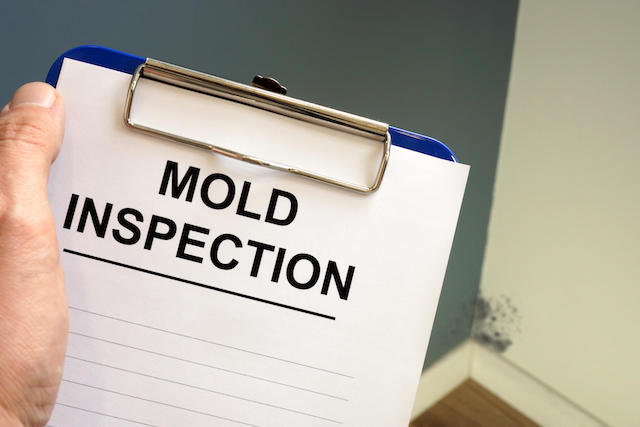
Mold inspections set the groundwork for a successful remediation. This qualified individual will be able to determine if there’s mold growth in a home, what species are present, where the colony or colonies are, what the levels of contamination are, and what caused the growth in the first place.
Every data point is needed so that a remediation team can come in to eliminate the contamination and fix the problem that led to mold growth in the first place.
This individual will be able to determine if there’s black mold present inside of the home, where the colony or colonies are, what the levels of contamination are, and what caused the growth in the first place. They should understand how crucial this is for your ongoing health and should spend hours combing through the interior and exterior of the home, using various methodologies, and collecting extensive data.
With this information, you can determine how to properly remediate and decontaminate that indoor environment.
If you’re not quite ready to hire a mold inspector yet, consider an at-home testing alternative such as The Dust Test.
How to Get Rid of Black Mold
To properly remediate black mold, the issue that led to the growth in the first place must be resolved and the contamination present handled. This includes the active colony, dead mold particles, spores, mycotoxins, and bacteria. If anything is left behind, exposure continues and any chronic health issues can persist. The roots must be removed as well. If they remain behind, the mold colony could grow right back. It’s similar to properly getting rid of a weed in a yard.
Small Issues:
Black mold must be handled with care. Only very small areas of growth should be attempted so that you are not exposed to high levels of toxic particles aerosolized by the remediation process.
Keep in mind as well that the issue that led to the opportunity should also be resolved, or else the black mold can come right back.
The first step is to determine the type of surface that the growth is on. The process will vary based on the surface type in question.
The three surface types include:
Porous: liquid absorbs into them, such as rags, towels, clothing, and carpet
- Non-porous: liquid pools on top of them, such as finished wood, sealed countertops, and glass
- Semi-porous: some liquid pools on top
For black mold on nonporous surfaces like metal, and the issue that led to the mold growth is resolved, you can remediate it by using a botanical cleaner like Benefect Decon 30. Spray this on the surface and then allow it to sit for 30 seconds. After this dwell time, wipe the surface with a microfiber cloth, as they are 100 times better at removing small particles. Repeat the process two times, allowing the cleaning product to sit for 30 seconds to ensure mycotoxins and bacteria, which are often found alongside mold colonies, are removed. These are particularly difficult to remove from a surface, which is why a thorough process is required. Use a different side of the microfiber cloth with each wipe and then throw it away after use.
For black mold on semi-porous surfaces, such as hardwood, the area needs an abrasive technique to remove the roots, as these can grow into the surface and be difficult to remove. Small particles like mycotoxins could have also burrowed within the fibers of the surface. From there, a thorough remediation process including steps such as applying additional products such as hydrogen peroxide, can be used to eliminate the particles present, and then the surface should be sealed. The process will just depend on the surface type and professional guidance is typically best. This comprehensive process is necessary because the mold can grow right back if the roots are left behind. On the other hand, exposure will continue if contaminants are still present.
As the EPA states, even dead mold can trigger adverse health reactions.²² That’s why bleach should never be used to get rid of black mold.
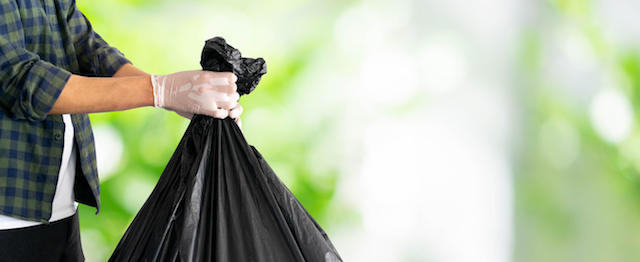
For porous surfaces like clothing, it’s best to throw them away and start fresh with a new item to ensure all of the contamination is removed. The fibrous nature of the item makes it incredibly difficult to successfully remediate microbial growth.
Keep in mind that when you’re remediating the surface, particles will become airborne during the removal process Setting up proper engineering controls, wearing personal protective equipment, and creating a containment area should be included to help protect you and your home from the particle party.
After remediation, deep clean the surrounding area to remove any spores and mycotoxins that were released while the microbial growth was active.
If the growth comes back, it’s best to hire a remediation team to handle the issue.
Larger Issues:
When it comes to a bigger contamination problem, a qualified remediation company should be brought in to deal with the issue. Keep in mind that not all remediation teams are built the same, though. The remediation company chosen should prioritize the health of the clients above all else. They should also have proven experience in successfully dealing with toxic environments so that their clients can return home to heal. At the end of the day, that is the ultimate goal.
Their protocol should be based on three main pillars to achieve this success.
These three pillars are:
- Remediate the sources and mold properly
- Identify and address the problems that led to the sources in the first place (otherwise, the mold will just grow back)
- Eradicate all contamination that exists from the mold problem, including mycotoxins and bacteria
If any of these boxes aren't ticked, the project will be unsuccessful. The microbial growth could come right back or contamination could be left behind, allowing exposure to continue. Both of which are wellness no-nos.
During this process, it’s also a great idea to find a medical professional well-versed in mold toxicity, who can identify things like black mold symptoms and how to detox all of those toxins from the body. Healing from mold exposure involves creating a safe environment that allows for recovery and giving the body the things it needs to get back into balance.
How to Prevent Black Mold
Preventing black mold involves reducing the opportunities for growth and eliminating spores from indoor environments. The fewer spores there are, the less likely it is that one will stumble onto a habitable environment.
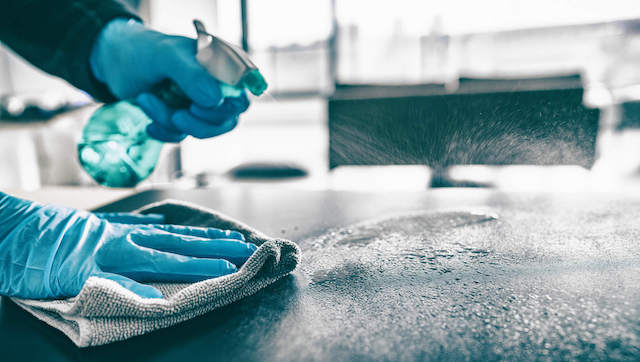
Steps to prevent black mold include:
- Resolving leaks and water damage ASAP
- Maintaining indoor humidity levels between 35-50%²³
- Investing in air purification
- Deep cleaning regularly, particularly dusting
- Maintaining appliances
- Scheduling an HVAC technician to come out and service the system in the fall and spring
- Upgrading to the highest-rated MERV filters the HVAC system can handle and changing them on time
- Regularly check for mold growth and water damage. Top areas to look at include:
- Attic
- Basement
- Crawlspaces
- Underneath sinks
- Inside cabinets
- Carpet
- Window sills and door frames
- Appliances
The more steps you can take to stop black mold growth (and mold as a whole) in your home, the healthier that indoor space will be.
Your Healthy Home

Our homes are supposed to be our safe spaces away from the world. If they’re filled with contamination such as black mold, though, that can negatively impact our health. Every time we’re in that space, our bodies are bombarded by high levels of particles.
Living a healthy life should always involve actively working to maintain a healthy indoor environment. Having better awareness about threats like mold can help ensure you’re on the path to home health success. No one wants to live in a house that’s causing them to feel unwell.
Health begins at home.™
Still Have Questions?
A member of our team is here to help! Click on “Get Started ➤” below to book a consultation with a member of the HOMECLEANSE team. We have a few quick questions that will help us put together a roadmap to solve or prevent all of your mold problems.
Two minutes of your time could lead to better health for you and your family.
Citations:
Centers for Disease Control and Prevention. (2019, December 16). Facts about stachybotrys chartarum. Centers for Disease Control and Prevention. Retrieved May 17, 2022, from https://www.cdc.gov/mold/stachy.htm#:~:text=Stachybotrys%20chartarum%20is%20a%20greenish,is%20required%20for%20its%20growth.
Menetrez*, M Y., K. K. Foarde, T. D. Webber, D Betancourt, AND T R. Dean. GROWTH RESPONSE OF STACHYBOTRYS CHARTARUM TO MOISTURE VARIATION ON COMMON BUILDING MATERIALS. INDOOR AND BUILT ENVIRONMENT. SAGE Publications, THOUSAND OAKS, CA, 13(3):183-187, (2004).
Corda, A. C. 1837. Icones fungorum hucusque cognitorum I. Prague.
https://newtonlaboratory.com/mold/stachybotrys/
Centers for Disease Control and Prevention. (2000, March 10). Update: Pulmonary hemorrhage/hemosiderosis among infants --- Cleveland, Ohio, 1993-1996. Centers for Disease Control and Prevention. Retrieved May 17, 2022, from https://www.cdc.gov/mmwr/preview/mmwrhtml/mm4909a3.htm
Eisenman, H. C., & Casadevall, A. (2012). Synthesis and assembly of fungal melanin. Applied microbiology and biotechnology, 93(3), 931–940. https://doi.org/10.1007/s00253-011-3777-2.
Bitnun, A., & Nosal, R. M. (1999). Stachybotrys chartarum (atra) contamination of the indoor environment: Health implications. Paediatrics & child health, 4(2), 125–129. https://doi.org/10.1093/pch/4.2.125
Environmental Protection Agency. (n.d.). Mold. EPA. Retrieved from https://www.epa.gov/mold.
Centers for Disease Control and Prevention. Basic facts about mold and dampness. Centers for Disease Control and Prevention. Retrieved from https://www.cdc.gov/mold/faqs.htm.
World Health Organization. (n.d.). Mycotoxins. World Health Organization. Retrieved from https://www.who.int/news-room/fact-sheets/detail/mycotoxins.
FOOD AND DRUG ADMINISTRATION. (2020, May 27). Mycotoxin Analysis IV section 7 - Food and Drug Administration. FOOD AND DRUG ADMINISTRATION OFFICE OF REGULATORY AFFAIRS. Retrieved May 17, 2022, from https://www.fda.gov/media/73568/download
Wild, C. P., & Gong, Y. Y. (2010). Mycotoxins and human disease: a largely ignored global health issue. Carcinogenesis, 31(1), 71-82.
da Rocha, M. E. B., Freire, F. D. C. O., Maia, F. E. F., Guedes, M. I. F., & Rondina, D. (2014). Mycotoxins and their effects on human and animal health. Food Control, 36(1), 159-165.
Stachybotrys chartarum. SGS Forensic Laboratories. (n.d.). Retrieved May 17, 2022, from http://www.falaboratories.com/lab-services/microbiology/library/stachybotrys-chartarum.asp
Nchh. (n.d.). Mold. NCHH. Retrieved from https://nchh.org/information-and-evidence/learn-about-healthy-housing/health-hazards-prevention-and-solutions/mold/.
Curtis, L., Lieberman, A., Stark, M., Rea, W., & Vetter, M. (2004). Adverse health effects of indoor molds. Journal of Nutritional & Environmental Medicine, 14(3), 261-274.
Bush, R. K., Portnoy, J. M., Saxon, A., Terr, A. I., & Wood, R. A. (2006). The medical effects of mold exposure. Journal of Allergy and Clinical Immunology, 117(2), 326-333.
Valtonen V. (2017). Clinical Diagnosis of the Dampness and Mold Hypersensitivity Syndrome: Review of the Literature and Suggested Diagnostic Criteria. Frontiers in immunology, 8, 951. https://doi.org/10.3389/fimmu.2017.00951
Kovalchuka L, Eglite J, Lucenki I, Zalite M, Viksna L, Krumina A. Associations of HLA DR and DQ molecules with Lyme borreliosis in Latvian patients. BMC Research Notes 2012; 5: 438.
Environmental Protection Agency. (n.d.). What does mold smell like? EPA. Retrieved from https://www.epa.gov/mold/what-does-mold-smell.
EPA. (n.d.). Should I use bleach to clean up mold? EPA. Retrieved from https://www.epa.gov/mold/should-i-use-bleach-clean-mold.
EPA. (n.d.). A Brief Guide to Mold, Moisture, and Your Home. EPA. Retrieved from https://www.epa.gov/mold/brief-guide-mold-moisture-and-your-home#tab-6.
Must-Have Indoor Air Quality Tools
-

EC3 Laundry Additive
Add EC3 to every rinse cycle to rinse away mold, bacteria and musty odors from...
-
$23.00 Shop Now -

Intellipure Compact Air Purifier
Small in size, but delivers powerful results, reducing airborne microorganisms like mold, viruses, and bacteria.
-
$649.00 Shop Now -

Intellipure SuperV Whole House Air Purifier
Turn your HVAC into a filtration system, removing 99% of ultrafine particles including airborne mold,...
-
Price range: $2,000.00 through $2,995.00 Shop Now -

HomeCleanse Cleaning
Take your cleaning to the next level buying all the tools we use to keep...
-
Price range: $299.00 through $549.00 Shop Now -

Mold & Bacteria Contents Cleaning
Remove harmful pollutants that accumulate in the dust of your home. (Options available for renters...
-
Price range: $99.00 through $349.00 Shop Now -

EC3 Mold Solution Concentrate
Micro Balance EC3 Mold Solution Concentrate is a natural botanical that removes mold spores, bacteria,...
-
$33.00 Shop Now -

Industry-Leading Intellipure Ultrafine 468
The Intellipure® Ultrafine 468 features our proprietary DFS technology, which traps and eliminates potentially harmful...
-
Shop Now -

The Dust Test
The Dust Test is a comprehensive at-home test that helps you identify mold and toxins...
-
$299.00 Shop Now -

EuroClean 4 Gallon Hepa Vacuum
The Euroclean GD930HSP is a 4 Gallon Dry HEPA Vacuum that meets the EPA's standards...
-
$849.00 Shop Now -

AprilAire E080 Professional Dehumidifier Bundle
Includes all the dehumidifier accessories you will need. Our Aprilaire E080 comes with a drain...
-
$1,524.99 Shop Now
